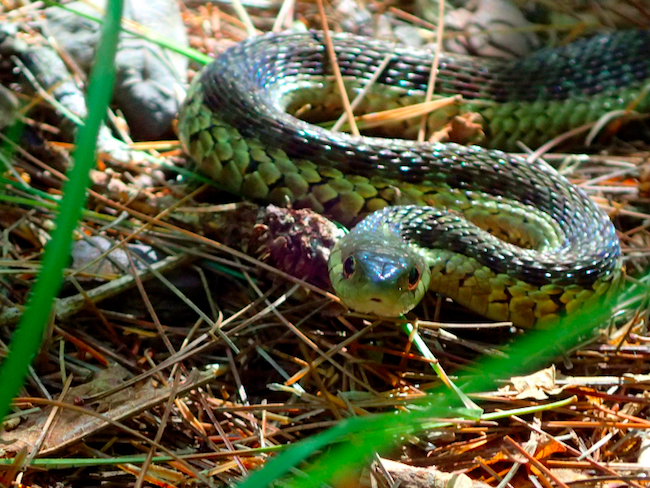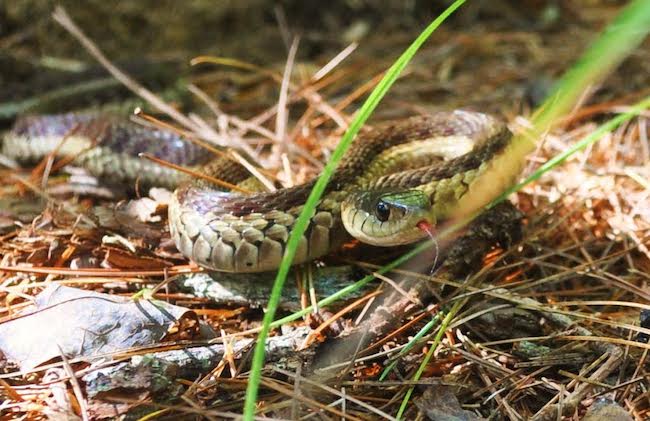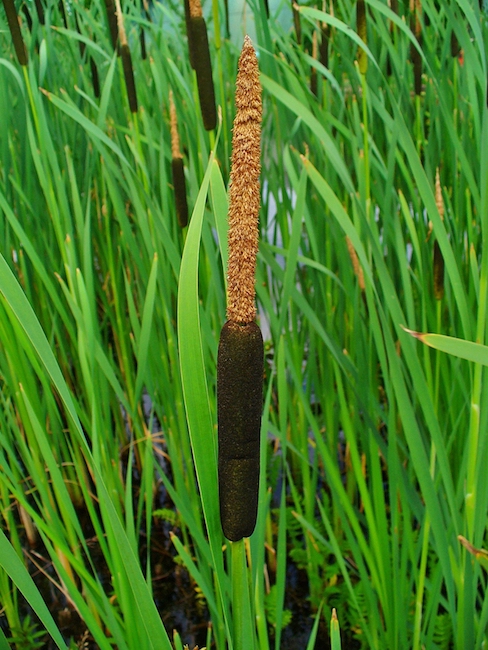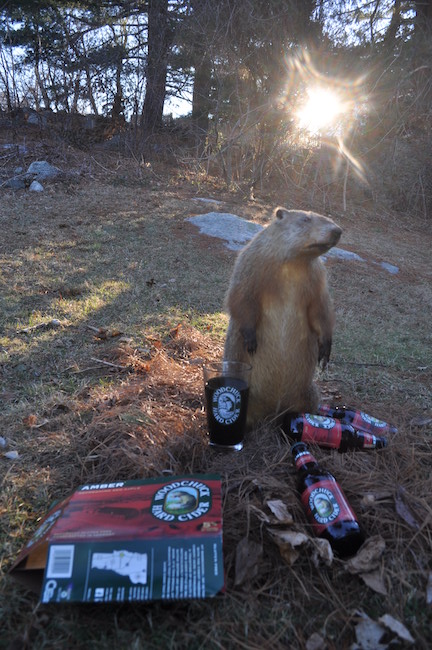Newsletters
February 2017 - Eastern Garter Snake, Broad Cattail
WELCOME TO GREEN FUTURES!
FEBRUARY, 2017
"If you want to make enemies, try to change something.”
-Woodrow Wilson
"Without a trace of irony I can say I have been blessed with brilliant enemies. I owe them a great debt, because they redoubled my energies and drove me in new directions.”
-E. O. Wilson
RECENT ARTICLES READERS FOUND INTERESTING – Check them out
River at risk. http://www.startribune.com/a-great-river-at-risk/394188561/
A proclamation. https://www.blm.gov/sites/blm.gov/files/documents/files/2016bearsears.prc_.rel_.pdf
And, another proclamation. https://www.blm.gov/sites/blm.gov/files/documents/files/2016goldbutte.prc_.rel_.pdf
Terry Tempest Williams in climate fight.https://www.theguardian.com/environment/2016/dec/31/terry-tempest-williams-books-conservationist-public-lands-fight
Time is running out. https://www.bostonglobe.com/ideas/2016/12/30/the-paris-deal-not-enough-and-time-running-out/o8bz0uzHP01AHYquOWSJbN/story.html
Natural resource threats. http://news.nationalgeographic.com/2017/01/maps-reveal-how-global-consumption-hurts-wildlife/?google_editors_picks=true
Climb a giant sequoia. http://news.nationalgeographic.com/2017/01/giant-sequoia-360-videos-drought-water-use/?google_editors_picks=true
Yes, even in Maine biomass burning is not “carbon neutral.”http://www.pressherald.com/2017/01/13/maine-voices-biomass-energy-carbon-neutral-not-when-you-look-at-the-facts/
Getting warmer around here. https://www.bostonglobe.com/metro/2017/01/12/northeast-will-experience-faster-warming-from-climate-change-new-study-finds/nitce6eK8zqQN2LXZXgvwK/story.html
E.O. Wilson and hope. https://news.mongabay.com/2017/01/e-o-wilson-on-half-earth-donald-trump-and-hope/
“Resist” - https://www.nytimes.com/2017/01/25/us/greenpeace-resist-banner-protest-trump.html?_r=0
Since the inauguration of President Trump we have received from our readers dozens of links to articles on Trump vs. our environment. At this time many news articles on Trump/environment are so hasty, sketchy and repetitive that we are not adding them to our list, above. As these issues and news reports sort themselves out, over the coming month, we will list links to those most relevant in our next newsletter.
FEBRUARY'S - SHAME ON THE MA DEPARTMENT OF CONSERVATION AND RECREATION (DCR)
This month's shame on DCR concerns the amazing amount of money this supposedly underfunded and understaffed agency has at their disposal to spend foolishly.
One would think DCR would prioritize, first spend money to repair and maintain the property and facilities in their care, especially when the repairs are needed to fix damage caused through their negligence. Instead, the first thing they spend our taxpayer dollars on is another crony hire or on new, often dubious, projects.
Millions have been spent on failed golf courses; leaking boats; boardwalks; a taxpayer funded, private, political party-hearty; etc. One of their most recent foolish financial and public relations blunders is their Blue Hills Reservation deer hunt.
Deer have overpopulated in many areas of the country and they have in the Blue Hills Reservation too. Surrounded by major highways and hundreds of thousands of people and without their traditional predators, like wolves and mountain lions to keep their population in check, deer have been eating up the forest understory destroying their habitat and that of some other native species of animals and plants as well.
Since returning wolves and mountain lions to greater Boston is not about to happen, humans have to take their place. Regulated deer hunting during the seasonal time for such an activity inexpensively solves the problem and provides high protein venison ...more protein than beef ...free of synthetic growth hormones and chemical additives, to the successful hunters and/or community food pantries.
DCR's dysfunction precluded anything going smoothly and with little cost. Poorly planned hunts were rushed into existence ignoring legitimate concerns from many people. This was an ideal opportunity to explain the benefits of regulated deer hunting to an urban population, but an arrogant DCR squandered that opportunity.
Foolishly planned and implemented DCR's first hunt not only stirred up unnecessary controversy, but also cast doubt on the science of wildlife management and conservation.
According to news reports, this ill-planned DCR activity cost approximately $2,500 of taxpayer money for each deer killed. Other state and local agencies reported spending almost $200,000 on the four day hunt. DCR also left many of their forests and parks without supervision reallocating personnel to watch the hunt.
Totally foolish expenditure of money. We know many people who love venison and would have happily hunted deer at no cost to the state.
A few thousand dollars of that wasted money spent on killing a few deer could have been more responsibly spent beginning to repair DCR's egregious damage in the Freetown State Forest.
BIORESERVE FAUNA OF THE MONTH – Eastern Garter Snake (Thamnophis sirtalis)

Garter snakes are cautious, but curious. Imagine if you viewed the world from only an inch off the ground.
Photo – Barry French
What is the Massachusetts state reptile? No, it is not an official at the Massachusetts Department of Conservation and Recreation. It is a creature that is far superior, causing no harm to its environment. It is, the bright and beautiful garter snake!
Adult garter snakes average two feet in length. Body color is usually checkered tan, greenish-tan or brown with three yellow to white stripes running from the back of the head/neck to the tail. Some few lack stripes and in some the stripes are broken. The garter snakes forked tongue is red with black tips.
Some folks incorrectly call these small snakes “garden” snakes. Although they may be found in your garden, they are not garden snakes. They are “garter” snakes, so-called because of their resemblance to the striped garters popular in the 19th century that men used to hold up their socks.
At this time of the year our local garter snakes are all cuddling together in a big ball far underground brumating (cold-blooded animals brumate, warm-blooded hibernate) for the winter.
When the weather turns warmer, in early spring, the snakes will disentangle and appear above ground in meadows, open woodlands, backyards and even in vacant city lots. Mating is the first thing on their minds.
Female garter snakes emit pheromones to attract males. Females are larger than males. Males follow the pheromone trail until they find a receptive female and mate.
Snakes can be either oviparous, laying eggs, or ovoviviparous, giving birth to live young. Garter snakes are ovoviviparpus.
Garter snakes give birth to one to two dozen young at a time. The baby snakelings average 5 inches in length. The snakelings are on their own from the moment they are born.
Garter snakes mainly eat frogs, toads, salamander and earthworms. In coastal areas they may also feed on shore bird nestlings and baby meadow mice.
These snakes are not tree climbers, but they do ascend low shrubs in search of prey and they are also good swimmers. Garter snakes are rather calm and friendly critters often reluctant to flee from an approaching human. Some, if escape is prevented, will coil up and strike, but these snakes are so small there is little to fear from there pin-prick bite.
There best defense is the anal gland secretion they give off when grabbed by a predator or handled by a human. The foul-smelling material clings to whatever it touches. Despite this stinky defensesome of their predators don't seem to mind. Most hawks and some owls snatch them on fly-bys. Raccoons, opossums, foxes, weasels and larger snakes are always on alert for some fast food. Despite losses from predation and human development they are one of our most common snakes.
Eastern garter snakes are found across the entire eastern half of North America.

A snake is not being rude when it sticks out its tongue. The tongue is a snake's primary sensory organ which it uses to catch scent molecules to enhance its sense of smell.
BIORESERVE FLORA OF THE MONTH – Broad Cattail (Typha latifoloia)
Photo – Courtesy H. Zell – Wikimedia Commons
Just about everyone knows the cattail or “cat o' nine tails” as it is often erroneously called. The broad cattail, native or introduced, is found on every continent except Antarctica. It is a valuable wetland plant having many uses to wildlife and humans.
The broad cattail is a tall perennial plant with long, narrow grass-like leaves growing in colonies in shallow water marshes and along the edges of ponds, in lake coves, in drainage ditches, retention ponds and other freshwater impoundments. It grows best in full sun. Cattails can reach 6 to 8 feet in height.
Cattail plants are monoecious, both male and female flowers on the same plant. The cattail name comes from the cylindrical brown spike of female flowers directly below the yellowish spike of male flowers. The pollen falling from the male flowers and blown by the wind fertilizes the tiny female flowers below.
As the seeds form over the summer the male flower spikes dry out and most drop off. Cattails can also reproduce asexually via shoots off their rhizomes (underground stems that send out shoots and roots).
Cattail marshes are ecologically rich sites providing habitat for numerous species of birds, mammals, reptiles, amphibians, fish and insects. Some representative cattail marsh species are muskrats, beavers, raccoons, mink, geese, swans and ducks, sparrows, finches, rails, coots, wrens and sparrows, snapping turtles, water snakes, pickerel, largemouth bass, green frogs, moths and dragonflies.
Humans have a long history eating the flowers, seeds, pollen, roots and shoots and using the stalks and leaves.
Cattail rhizomes are long and thick and full of potato-like starch. The roots can be roasted or dried and ground into flour. The bright yellow pollen, gathered in June in our neck of the woods, can also be used as flour and added to breads, gravies, puddings and other foods.
Sprouts and young shoots can be peeled and used raw in salads or as a cooked vegetable. In mid-summer the immature fruit, the “cat tail”, can be boiled and eaten like corn on the cob.
Cattail's long, linear leaves can be woven into baskets, mats, hats and huts. The dried seed heads have been used as packing for wounds and burns, for insulation, and in padding for cradles, pillows, mattresses and diapers. The seed heads can also be smeared with pitch or soaked in kerosene and used as torches.
Unfortunately we are losing our valuable cattail marshes to incredibly invasive, alien, giant reeds (Phragmites australis). Phragmites is a rapidly growing Asian grass that quickly spreads from seeds and rhizomes crowding out cattails and other aquatic plants. The plant is of little food value to wildlife. It does provide thick cover for some night roosting birds.
In southeastern Massachusetts all of the upper reaches of our coastal rivers have lost most of their cattail marshes to this invasive species. In the Southeastern Massachusetts Bioreserve it has taken over sections of the North Watuppa and is especially evident in Pond Swamp.
Entomologists and ecologists continue the search for biological controls on this pernicious destroyer of our cattail marshes.
GROUNDHOG DAY – Celebrate with the Groundhog if it doesn't see its shadow! If it sees its shadow, take a nap.
As you know, if the groundhog sees its shadow on February 2 we end up with six more weeks of winter. If it doesn't see its shadow, spring comes early.
We hear that global climate change has our local groundhogs quite concerned. If the winters continue to warm, will the groundhogs abandon their burrows and stay active all winter? Will they all leave and migrate north to Canada? Will they continue their tradition of predicting the coming of spring from Canada? Will their Canadian predictions still apply to New England? What a potential disaster we have here.
Here's a photo of the groundhog taken with a spy camera. Looks like its been up well before its big day partying. Poor thing ...maybe it's just trying to forget?
GET READY - Vernal Equinox 2017– March 20 at 6:28 AM
Click here to check our Calendar.
<Back


Social